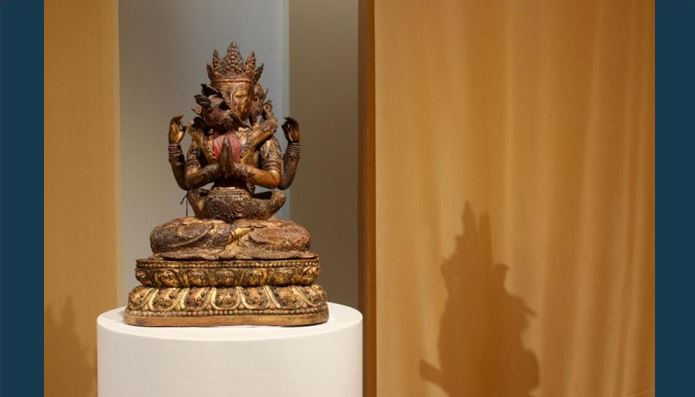
NEW YORK, Sept. 7 (UPI) — A vast collection of historical Chinese art including more than 120 artifacts from New York City’s Metropolitan Museum of Art is expected to fetch at least $23 million next week at Sotheby’s.
The seven live auctions, which include 1,200 items, kick off on Saturday and coincide with Asia Week New York 2019, Christina Walker, director of Asian Art and Decorative Arts at Sotheby’s, said Friday.
The auctions are expected to draw buyers from around the world. Collectors from China could be major players, according to Phyllis Kao, a Chinese art specialist at the auction house.
“They’re very important,” Kao told UPI. “A lot of the main players are mainland Chinese buyers. A lot of the winning bidders are really driving the price of art.”
Kao said as China has witnessed a massive rise in private wealth, the newly rich in the world’s second-largest economy are a “lot more interested in studying their own culture.”
The art on sale next week covers all major historical Chinese periods. Kao said collectors for the most part let their personal tastes dictate their purchases.
Bidders will have a wide range of art — paintings, calligraphy, sculpture — to choose from, a collection that includes an “exceptionally rare” gilt-lacquer wood figure of Buddhist deities, the Jinasagara Avalokiteshvara and Consort, dating from the 15th century Xuande period. The figures envelope each other in “Tantric form,” symbolizing the “union of Wisdom and Compassion.”
Kao said X-rays show scrolls are lodged inside the wood figure, and that the sculpture includes a kartrika, or ritual knife, in the hand of one of the two figures.
“It’s freely moving in her hand,” she said. “To have that survived for 600 years, is so amazing.”
The gilded figure is one of the most expensive objects to go on sale and is expected to fetch as much as $1.5 million. It’s a “bargain,” Kao said — using past sales of similar art as benchmarks.
A separate collection of art, gifted by U.S. philanthropists Florence and Herbert Irving to The Metropolitan Museum, includes works of carved jade, including a spinach-green jade brushpot dating from the 18th century Qianlong period.
Angela McAteer, head of Chinese works of art at Sotheby’s New York, said the artwork is an “exquisitely carved example” of a jade brush pot that offers a 360-degree diorama of “landscape, scholars and deer.” It is expected to fetch as much as $700,000, she said.
The Irvings’ collection also includes a rare Chinese example of a Qing dynasty jadeite “landscape” table screen — about the size of a desk calendar — that’s projected to fetch anywhere from $80,000 to $120,000.
“It’s a different mineral altogether,” McAteer said.
McAteer, a specialist in Ming and Qing dynasty art, said the table screen is one of a pair.
“Not only are they the same size, depth, same style of carving, they’re actually carved from the same block of stone. They’re like two slices of bread,” she said.
The vast sums of money at stake in art also means auction houses must stay vigilant amid an opaque and unregulated global art market susceptible to forgeries.
Kao says Sotheby’s has a thorough vetting process and an authenticity guarantee that assures buyers.
But she also said Chinese art traditions have historically encouraged replicating past examples, “not to deceive,” but to pay respect to bygone eras.
“Those works are also intrinsically valuable,” she said. “The 18th century Qianlong Emperor, for example, commissioned art that looked like earlier Song dynasty pieces.”
“Within Chinese works of art, this isn’t new.”






